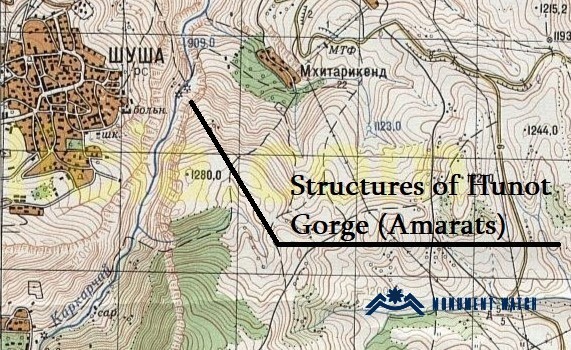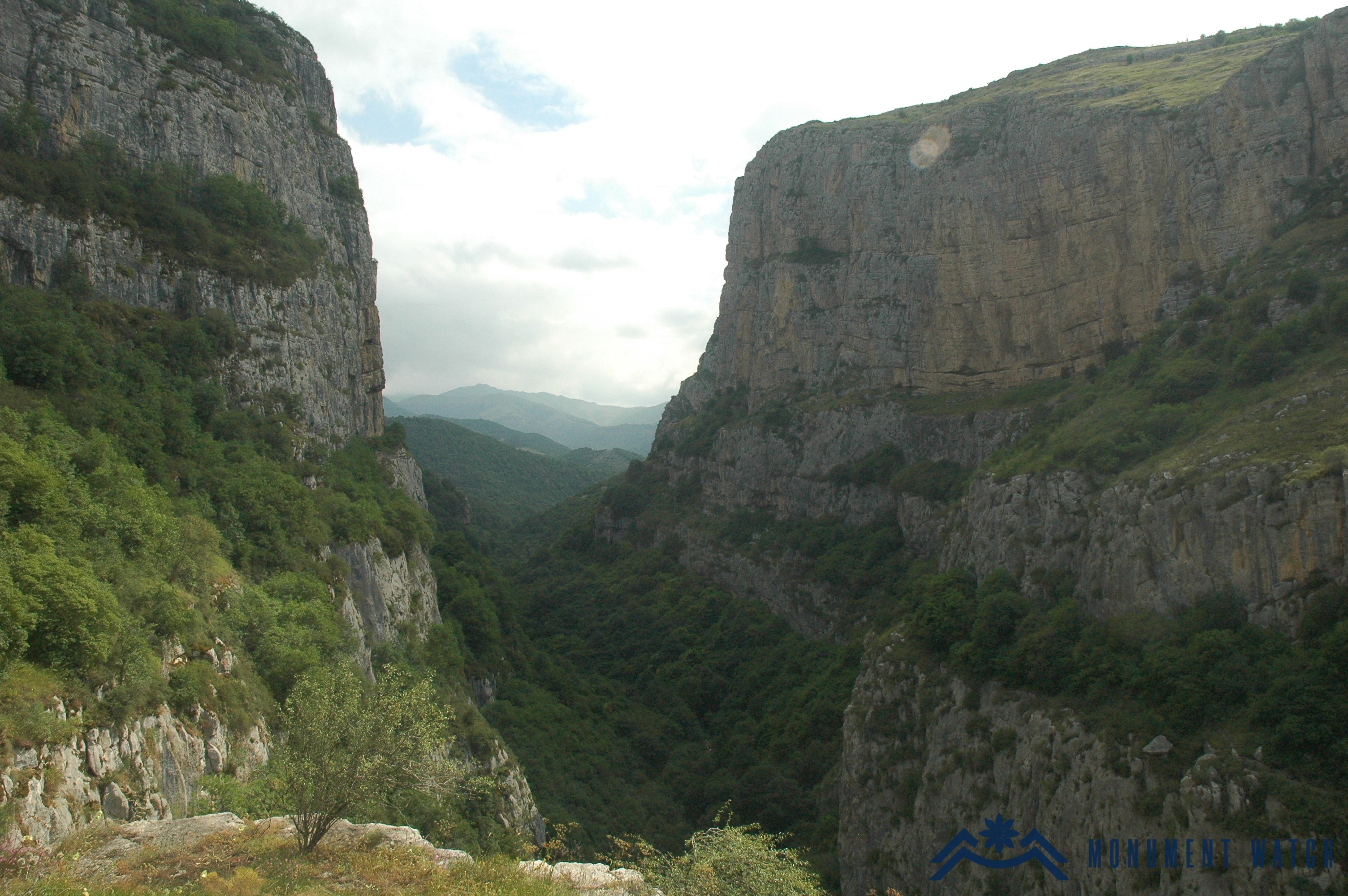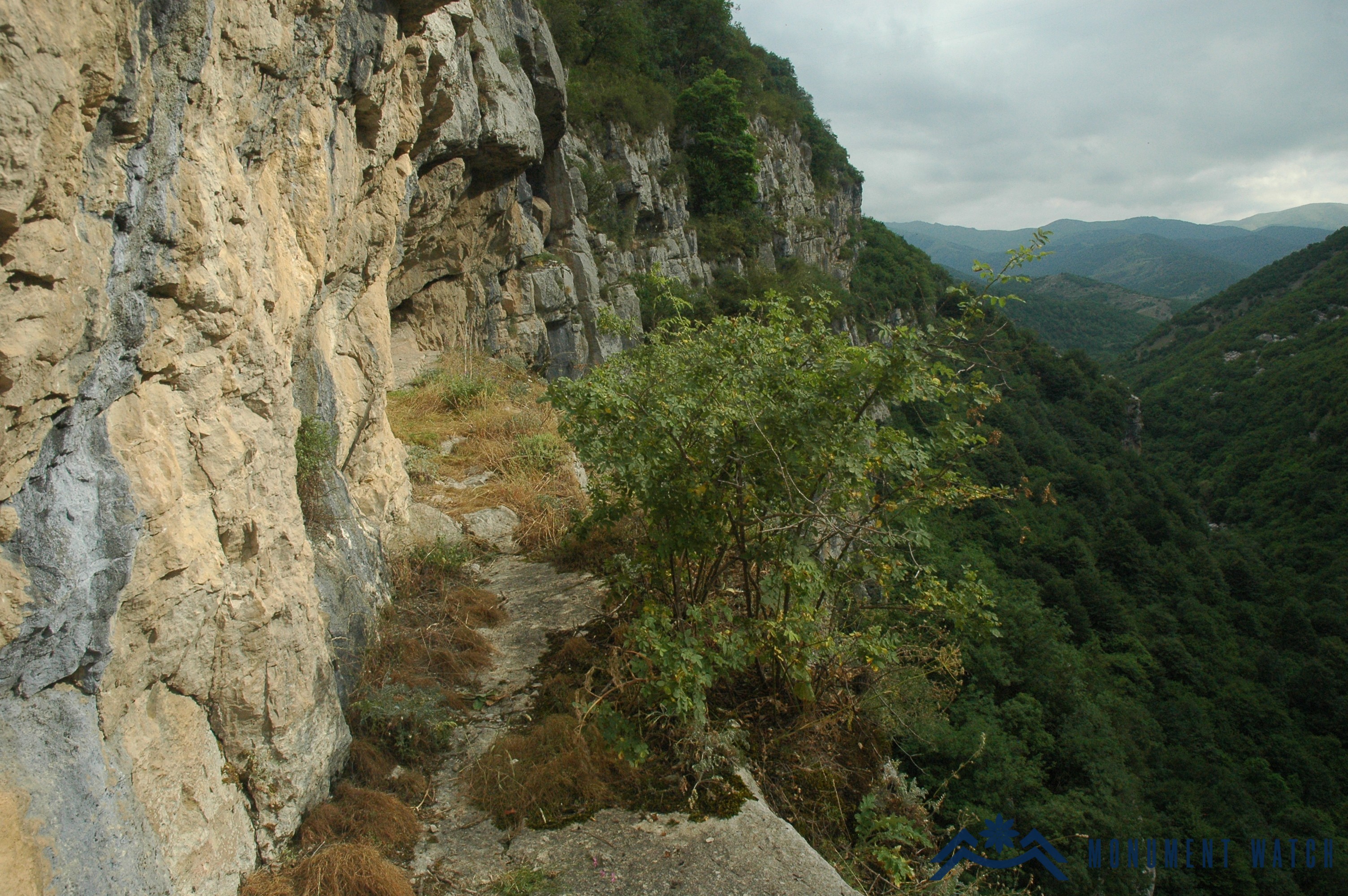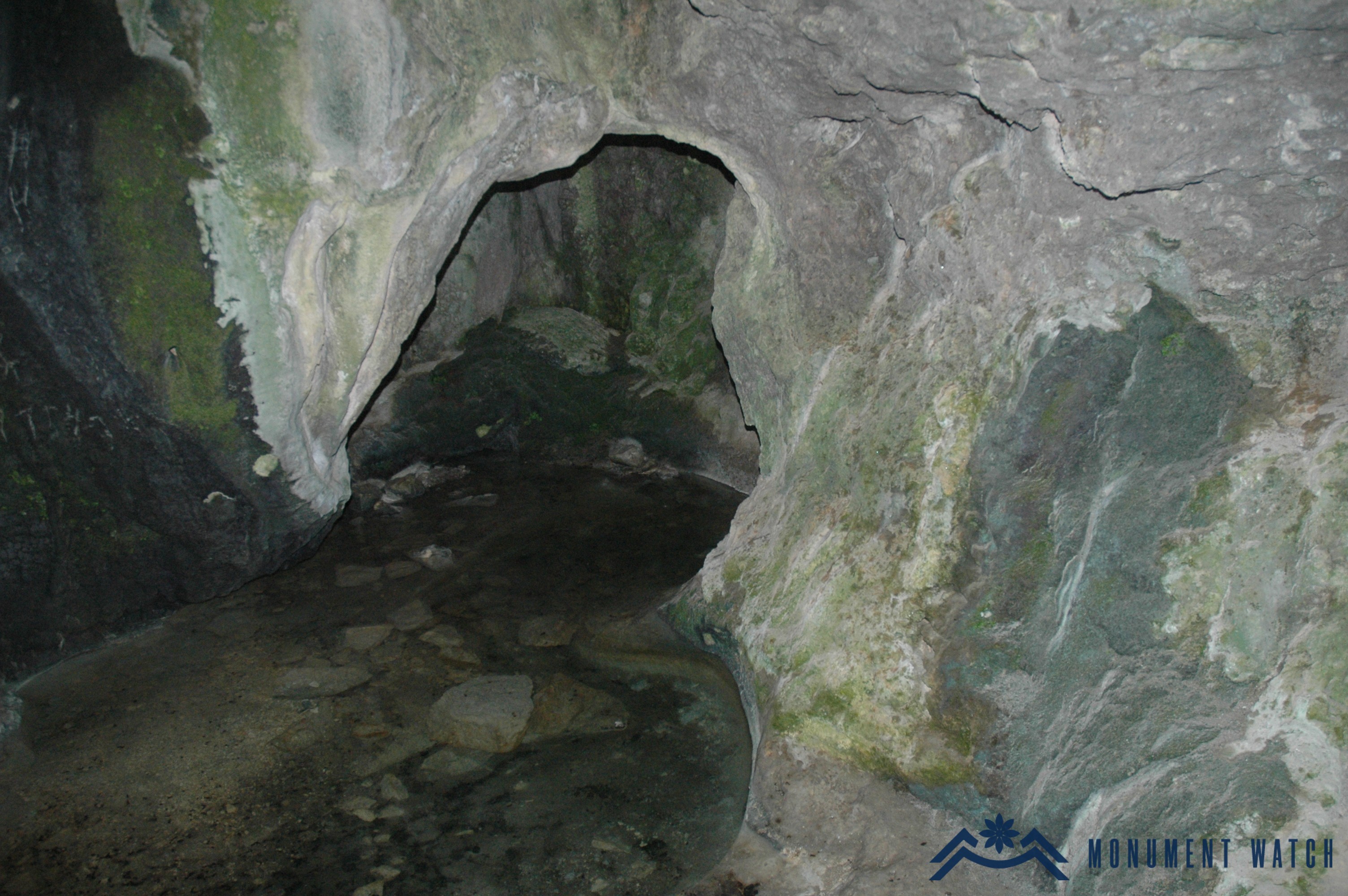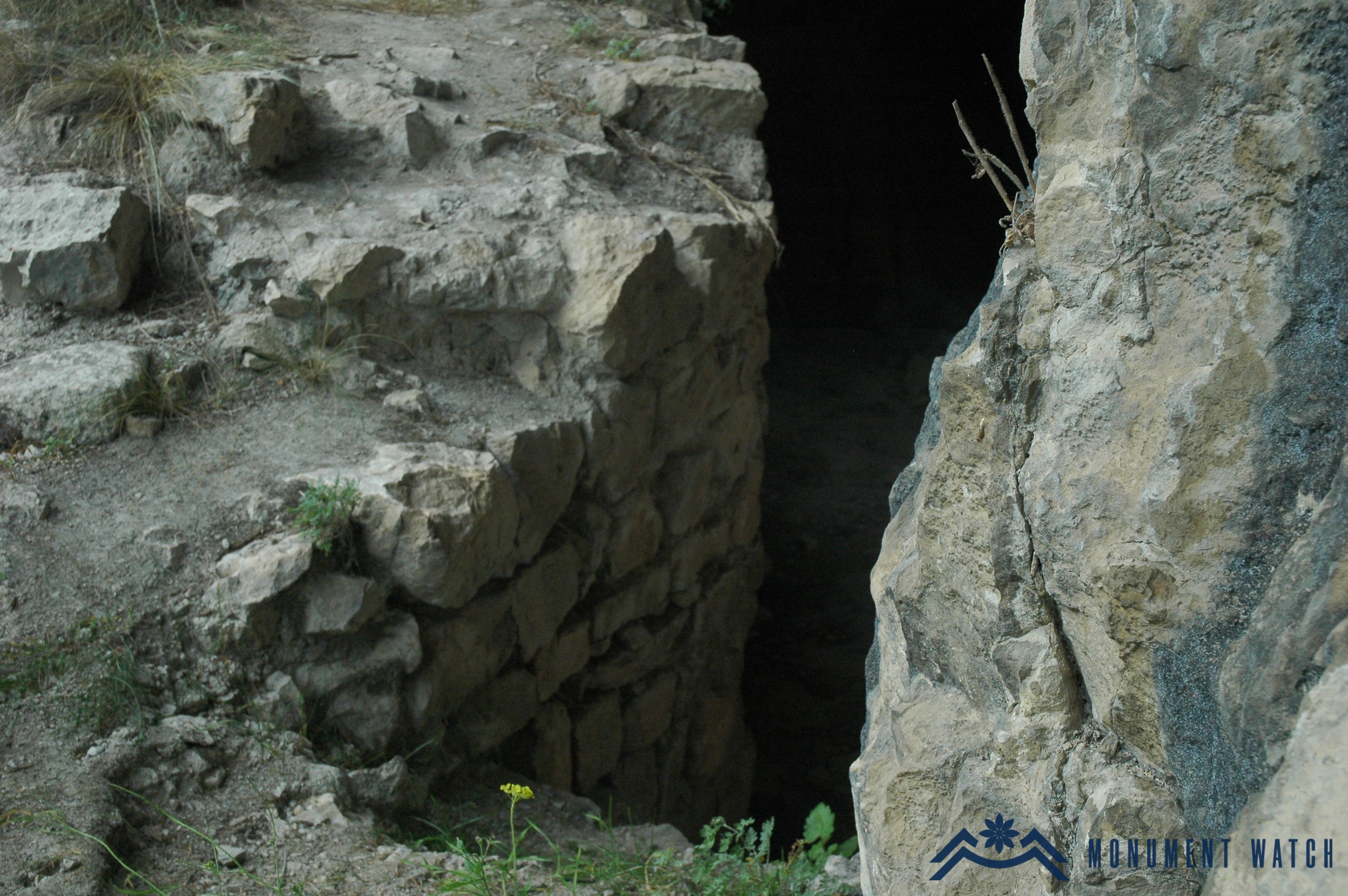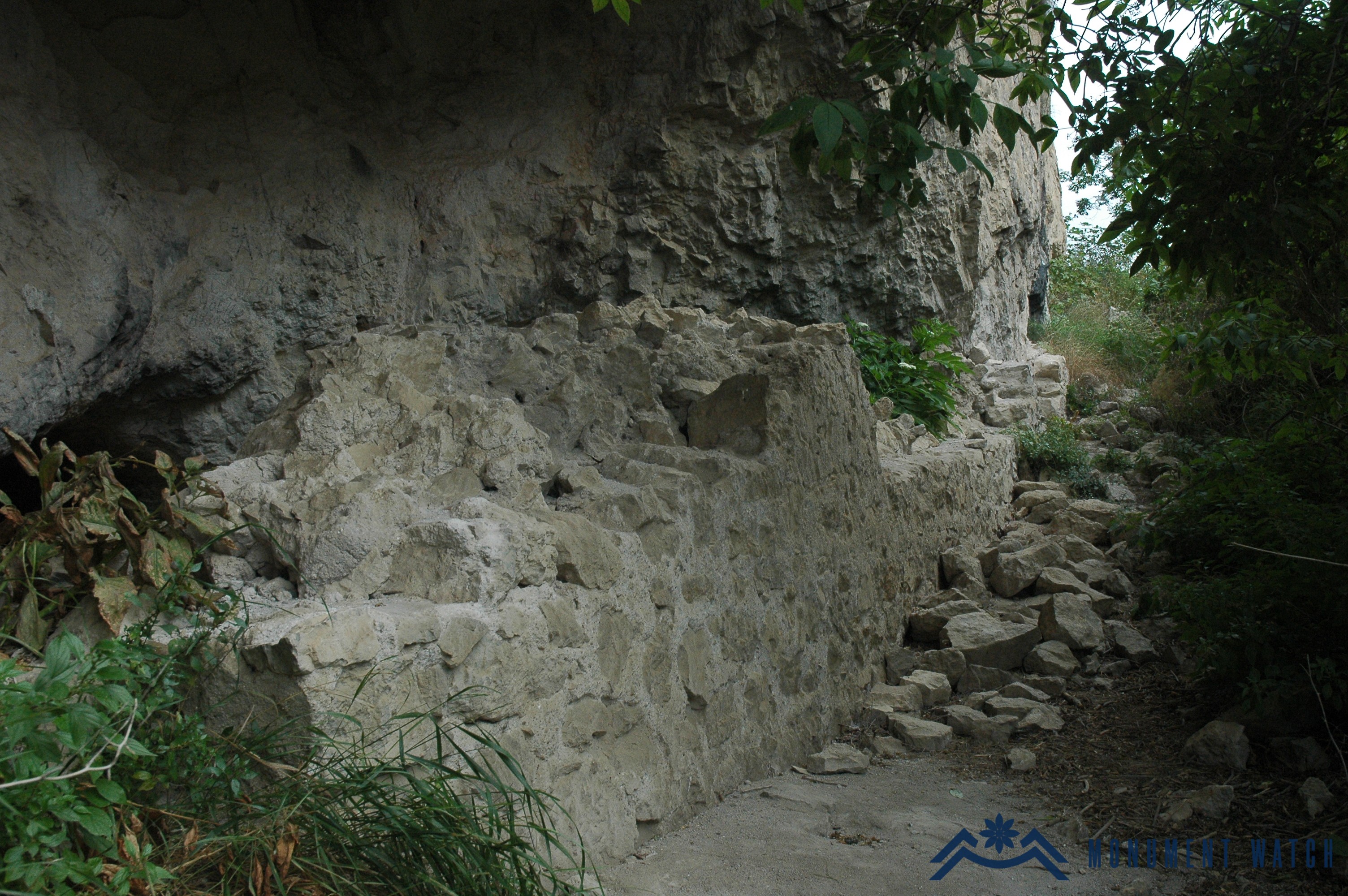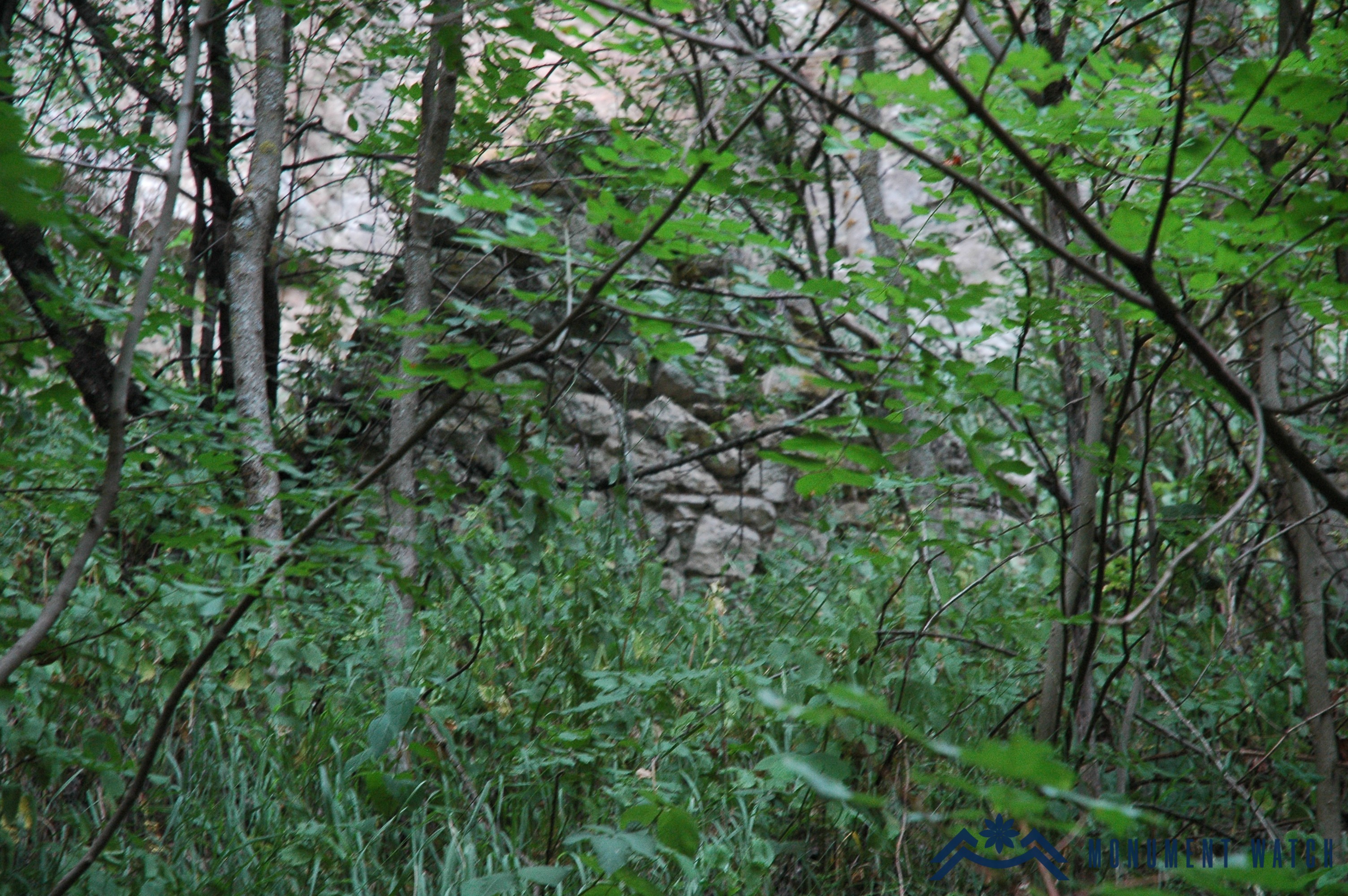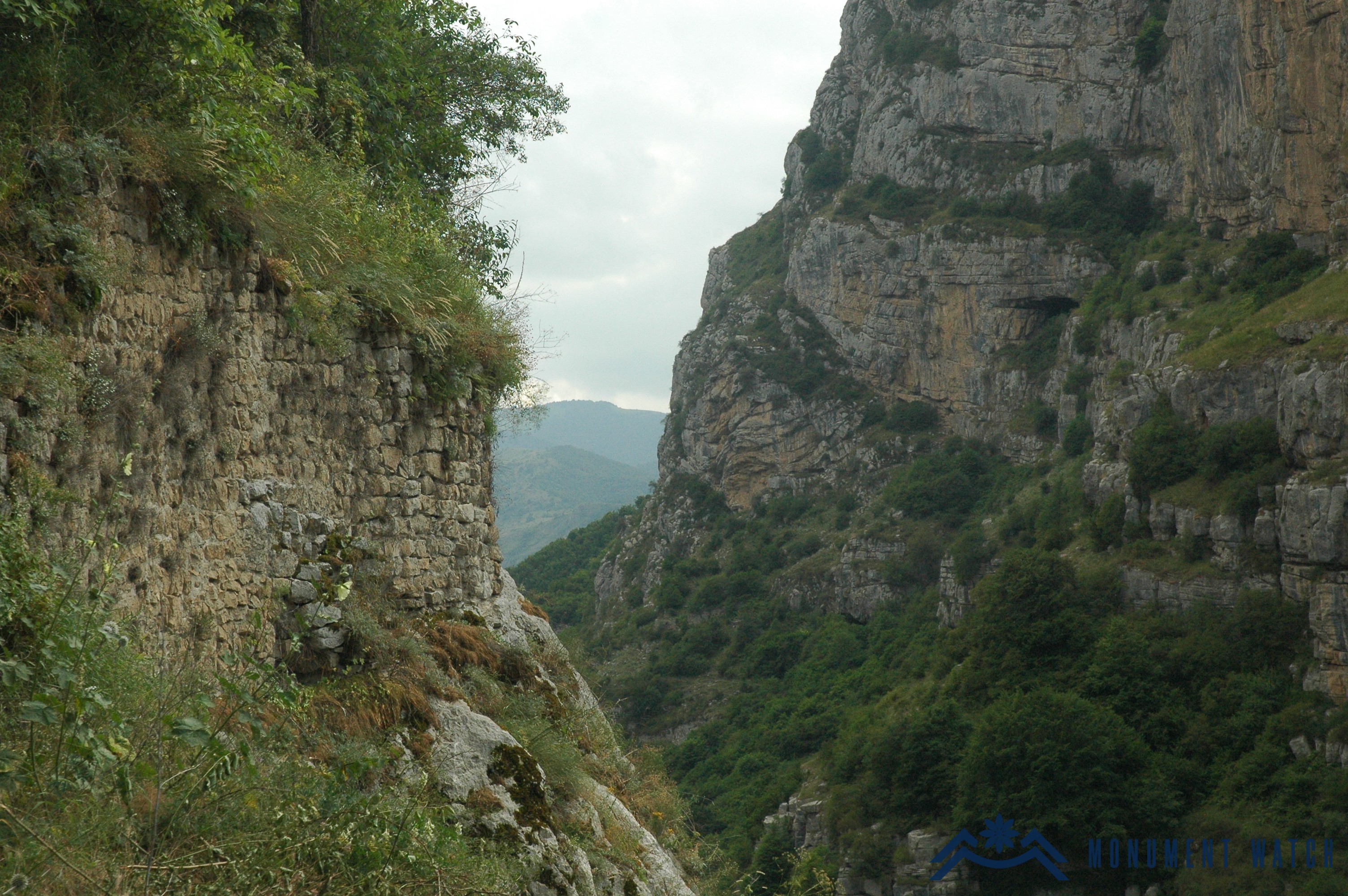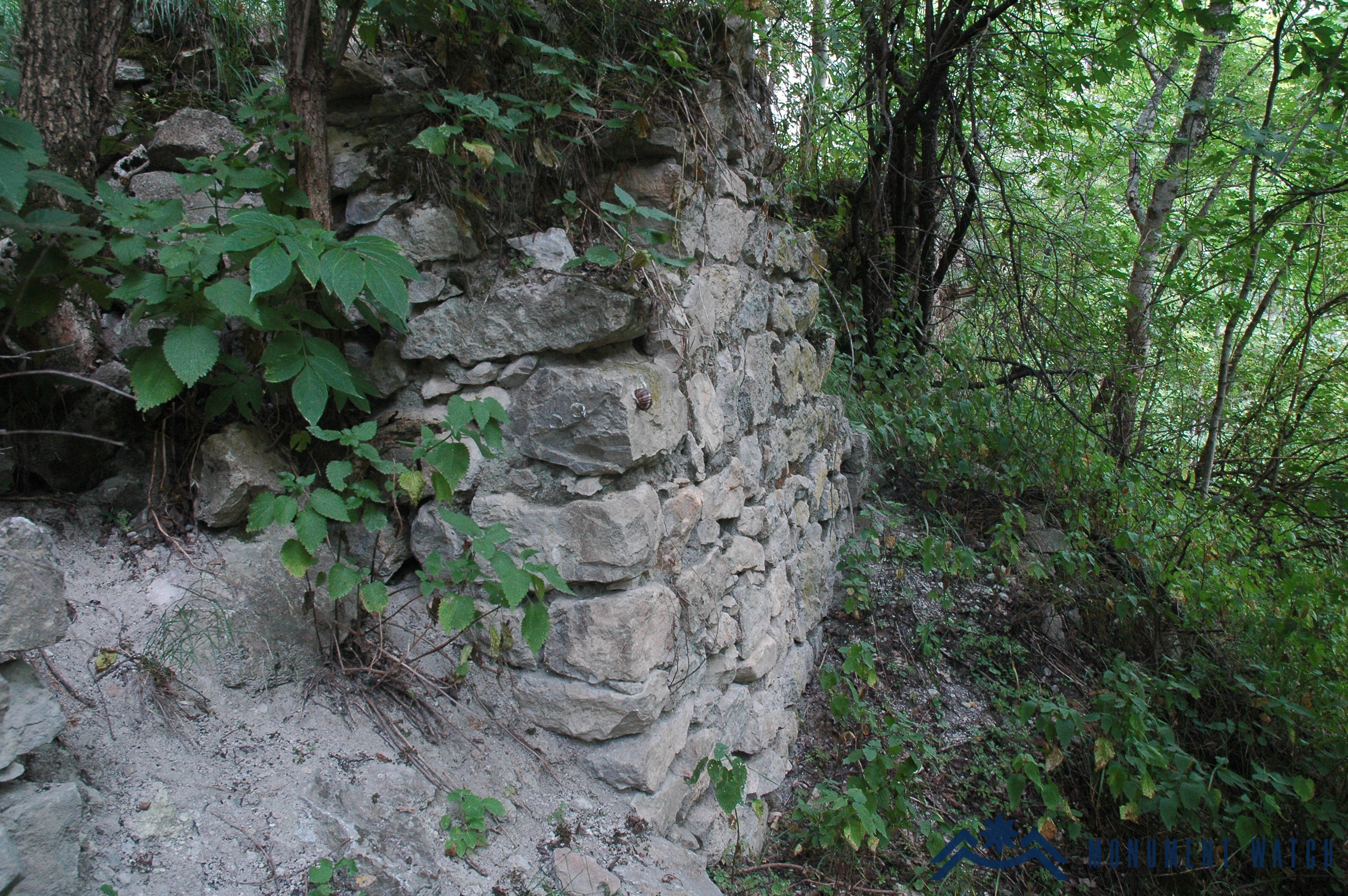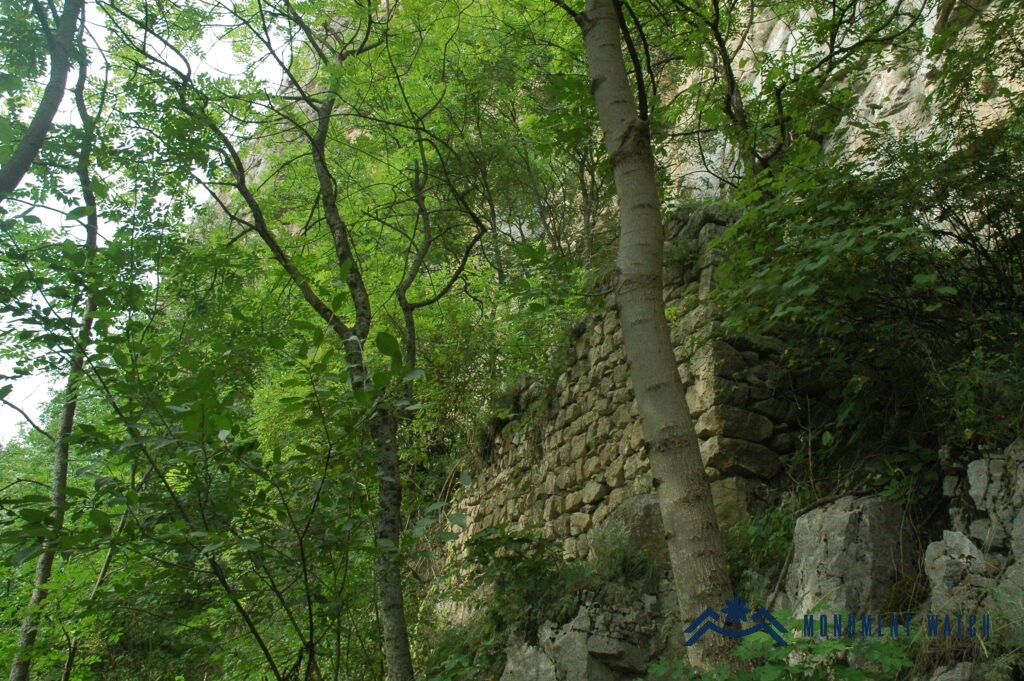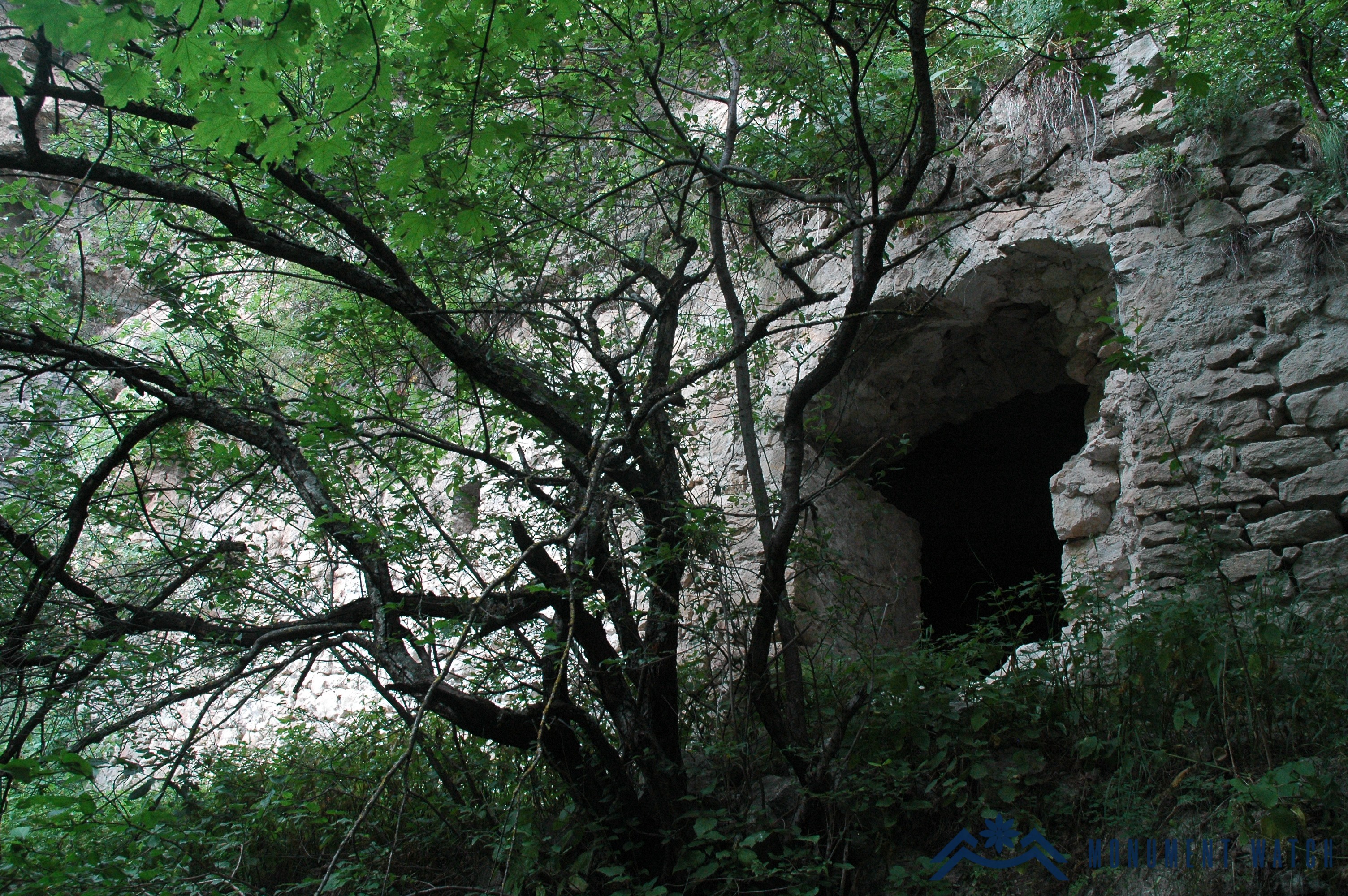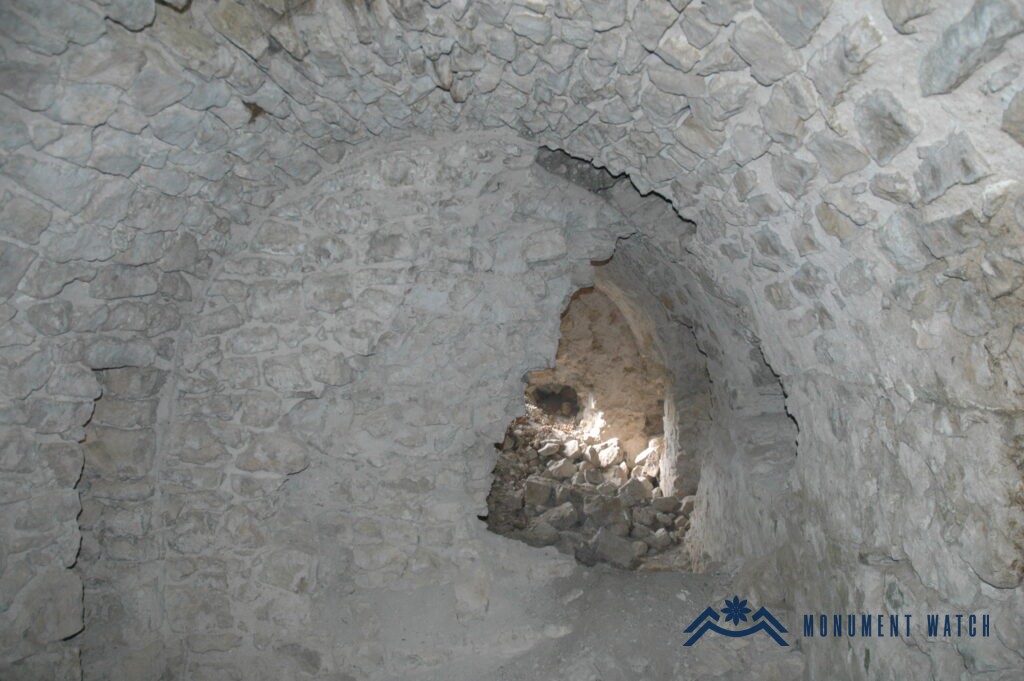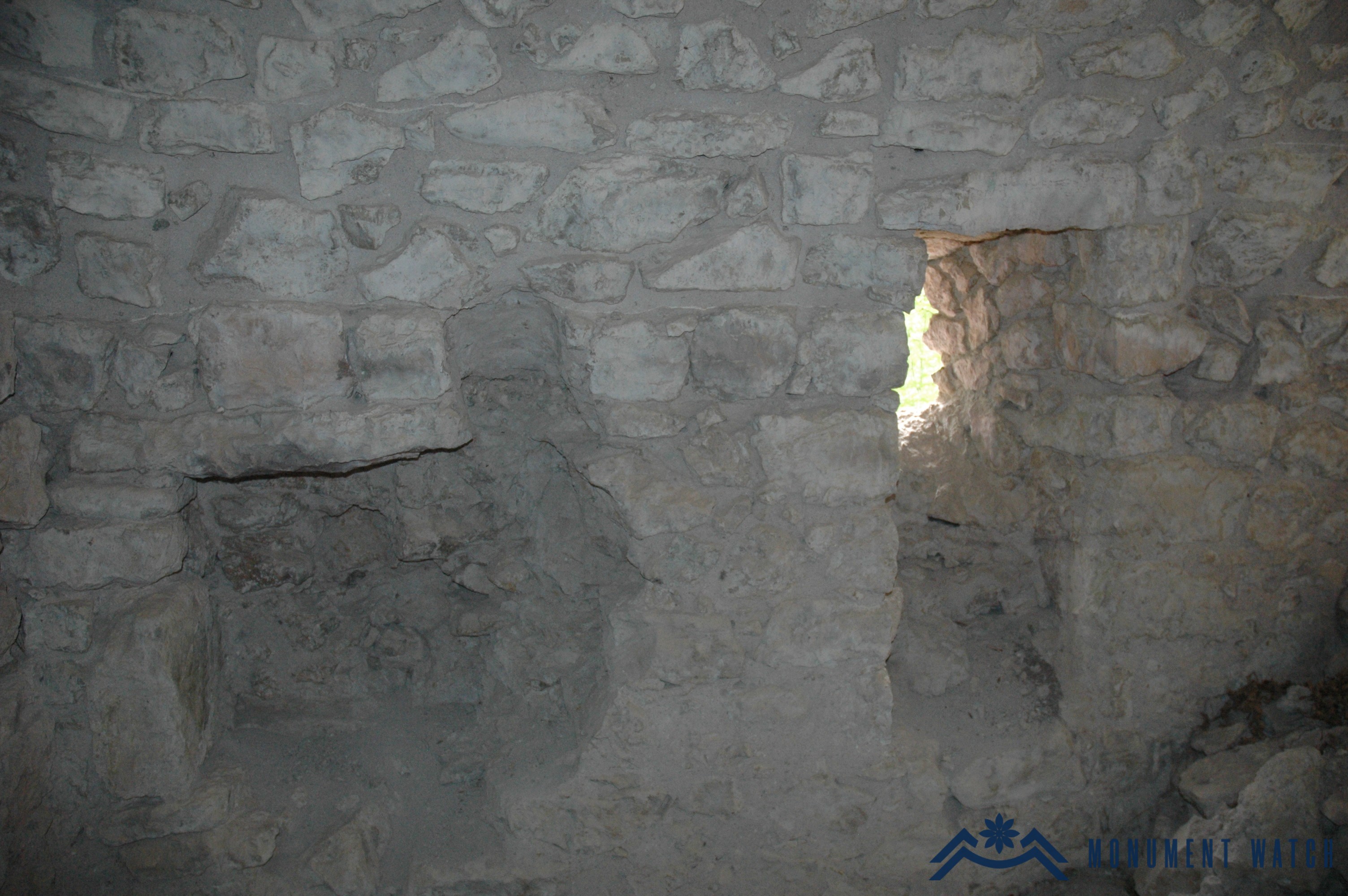Structures of Hunot Gorge (Amarats)
Location
The monument is situated in the Hunot Gorge east of the city of Shushi in the Republic of Artsakh, perched on the rocky formations along the right bank of the Karin Tak River (Fig. 1). It is popularly known as Amarats, meaning "palaces."
Since 2020, the area has been under Azerbaijani control.
Historical overview
Information about the monument has been preserved in the works of M. Barkhudaryants, E. Lalayan, Leo, Ahmed Bey Jevanshir, V. Potto, and P. Zubov.
Barkhutaryants notes: "Over many centuries, the steep, rocky mountain that was once connected to the mountain upon which the city of Shushi stands has been eroded by streams of water, forming a deep crevice. As it gradually deepened, this water-bearing fissure became an ideal abyss. On both sides of the narrow, deep, and terrifying chasm, walls were built—man-made yet seemingly eternal. There are also many caves on both sides of the river, the first of which is near the village of Hunot, on the hills of the right bank of the tributary. A narrow, steep, and treacherous stone path leads to the cave (Fig. 2). God forbid, if you slip or twist your foot, you will find yourself in a dark abyss (Fig. 3). The first entrance to the cave, constructed of stone and limestone, serves as the dwelling of the guard or gatekeeper; the second is for the servants; and the third is a spacious and beautiful cave, which is the lord's chamber. In this cave, there is clean water." (Barkhutareants 1895, 134; Figs. 4, 5)
Speaking about the construction of the Amarats, he writes:
"They are ancient caves, difficult to access, with their front parts built up in places. They are also situated on elevated ground, on the right side of the same tributary." (Barkhutaryants 1895, 135).
Lalayan refers to these caves as the Hunot Caves. He writes: "This cave is situated in a deep gorge on the southeastern side of Shushi, near the village of Hunot, from which it takes its name. The cave has three chambers: the first two are small, and the third is quite large. There is also a pool of water here." (Lalayan 1897, pp. 12-13)
According to Akhmedbek Dzhevanshir: "A rock palace-a refuge-was built on the steep slopes of the Dashalty Gorge. In times of trouble, during extreme danger, the rock palace complex on the eastern slope of the gorge served as a haven for the inhabitants. This castle contained a cold spring." (Jevanshir 1961, 75)
Additionally, Russian sources offer insight into these caves. In his account of the 48-day siege of Shushi in 1826, V. Potto notes that the inhabitants, led by their elders Safar and Rostom Tarkhanov, took refuge in a rocky gorge. The defenders utilized the natural caves in the gorge not only to repel the enemy but also to launch intermittent attacks on the Persian camp from the mountains. (Potto 1888, 81)
Sh. Mkrtchyan (1980, 152) also mentions the Amarats as part of the defensive system of Shushi.
Architectural-compositional examination
Hunot Gorge is situated on the border of the Askeran and Shushi administrative regions of the Republic of Artsakh, in the eastern, southeastern, and southwestern regions of Shushi city. The area in question was historically situated at the border of the Mets Arank and Mes Haband provinces, which subsequently became the Khachen and Varanda principalities. The length of the canyon ranges from 225 to 575 meters from west to east and 4.5 km from north to south (Arakelyan 2009, 47). In the Hunot Gorge, multi-story karst caves, grottoes, and karst cracks were formed at different levels (Arakelyan, Petrosyan 2020, 90).
The Amarats are in front of the ruins of the village of Hunot. This monument group consists of four caves along with defensive, residential, and economic structures. The cavities of the cave entrances and the cave floors are almost equal. Near the entrances, there are stone defensive structures (Fig. 6). The residential and economic structures are arranged in small squares on different levels, resembling closets (Figs. 7-10). The walls of these structures are lined with roughly worked limestone; only the stones of the entrances, windows, and corners are polished.
One of the structures, featuring a vaulted nave hall, is notably well-preserved (Figs. 11 and 12). Some structures exhibit evidence of firing points, niches, and fireplaces (Fig. 13).
The condition before, during, and after the war
Before the occupation, most of the monument's structures were well-preserved.
Bibliography
- Barkhutareants 1895 - Barkhutareants M., Artsakh, Baku.
- Lalayan 1897 - E. Lalayan, Varanda, "Ethnological journal", book 2, Tiflis.
- Leo 1973 - Collection of countries, vol. 3, book 2, Yerevan.
- Mkrtchyan 1980 - Mkrtchyan Sh. Historical and architectural monuments of Nagorno Karabakh, Yerevan.
- Jevanshir 1961 - Jevanshir Ahmedbek, On political existence of Kharabagh khanate: from 1747 to 1805, Baku.
- Potto 1888 - Potto V., The Caucasian War in separate sketches, episodes, legends and biographies, vol. 3, The Persian War of 1826-1828, S. Petersburg.
- Arakelyan 2009 - Arakelyan Yu., Karst relief forms of Honut Gorge, Scientific Bulletin of ASU, No. 2, 47-50.
- Arakelyan, Petrosyan 2020 - Arakelyan Y., Petrosyan G., Study of geomorphological monuments of the Unot Gorge for the development of tourism in the Republic of Artsakh, ASU Scientific Bulletin, No. 1, pp87-93.
Structures of Hunot Gorge (Amarats)
Artsakh
